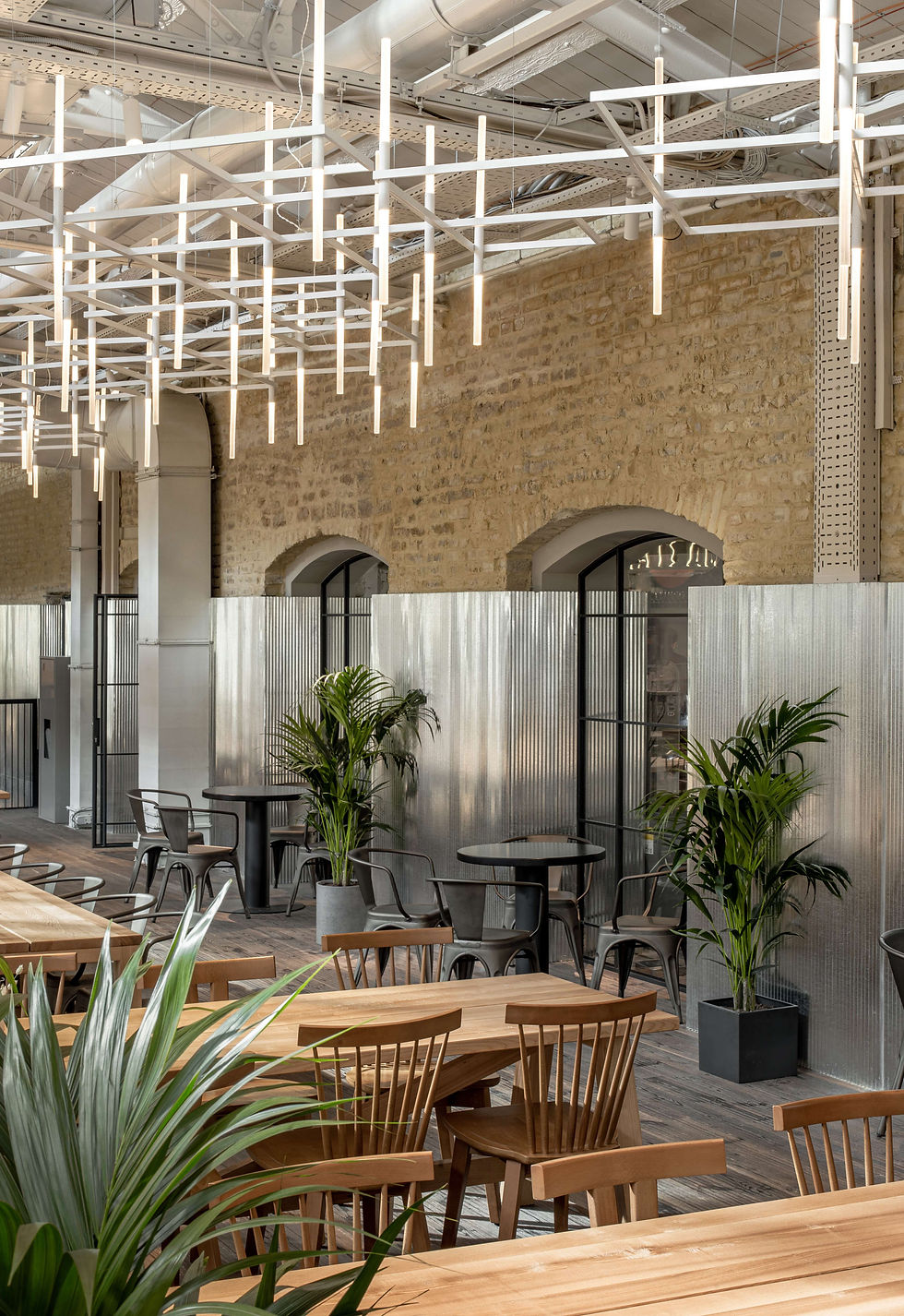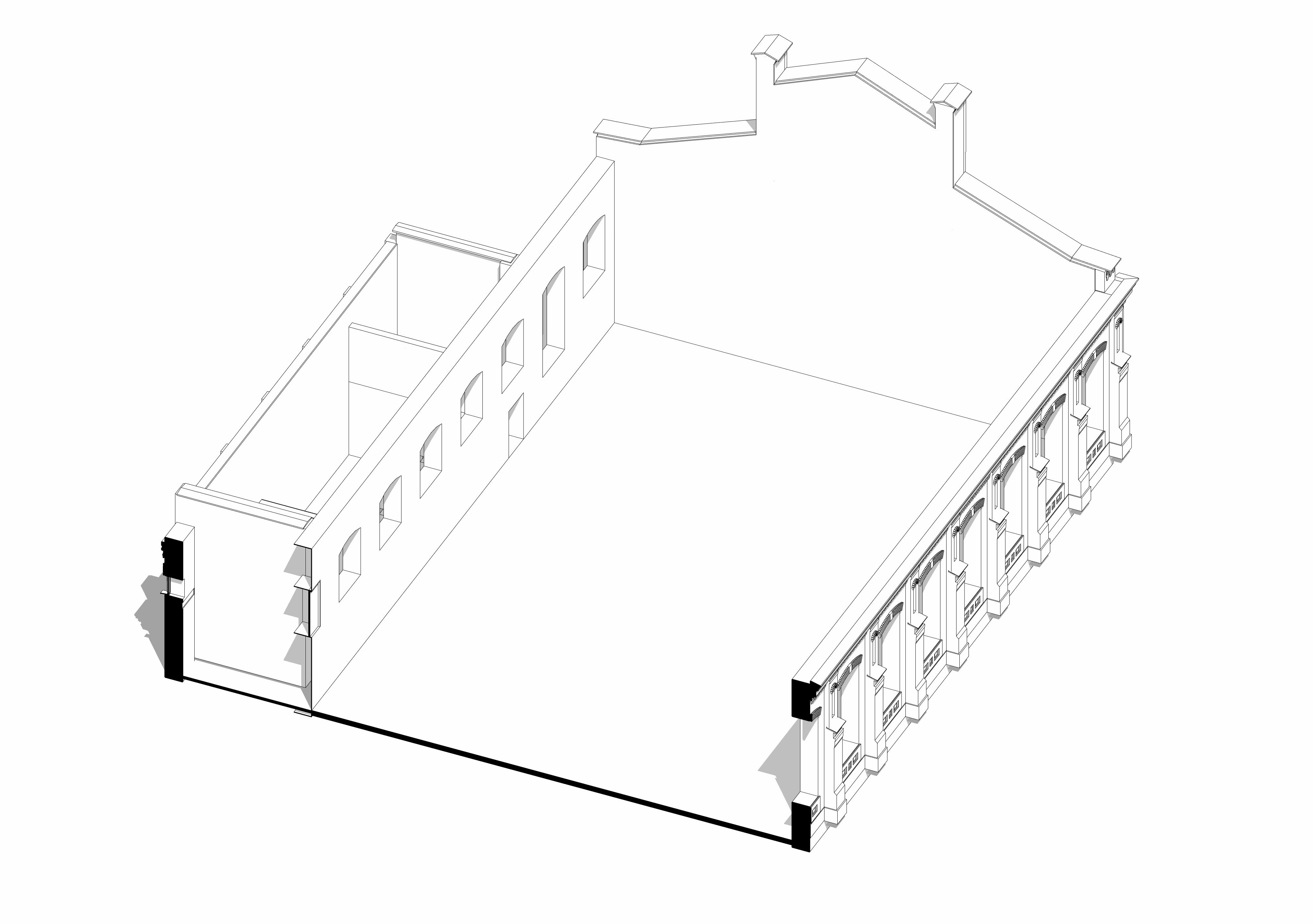Turning an 18th Century Military Arsenal into a Monumental Food Market in Kyiv
- The Design Collective

- Sep 3, 2020
- 4 min read
Kyiv Food Market by Balbek Bureau
The 2 000-sq.m Kyiv Food Market is located in the building No. 5 of the former military arsenal built at the end of the 18th century.
It is a fine example of industrial architecture, which distinctive authentic character originates from the building’s rich history. Once a cold and empty space, it has now become a point of attraction where people get together, giving the place a new social meaning.

A commission undertaken by balbek bureau team came with a clear vision of the project concept, developed by the founder of the first food market in Odesa, the owner of the company “Cooper’s people” Alex Cooper and Kyiv restaurateur, the founder of the La Familia chain restaurants Mikhail Beilin.
The co-founders’ concept was to collect the best Kyiv restaurants under one roof, where each of them would showcase their dishes. Menu options do not cross, which reduces competition between establishments to zero, and at the same time allows to satisfy the variety of taste buds. Zoning of the entire space was based on public perception and behavioral psychology. A starting point in space planning was a circular placement of the food court along the perimeter of the
space. It formed an atrium with approximately 300 seating places in the center. Since it was necessary to keep the original atrium height, all auxiliary spaces were placed right above the food units.

Since no provision for telecommunications was made in the original architectural design, the project’s challenge was the lack of modern infrastructure. The issue was resolved by concealing various engineering solutions from public view underground.
The geometry of the façade windows was left in its original appearance, confining restoration work to the mere replacement of the glass. The wall on the opposite side of the hall was completely bricked up, but during the project development it was reopened. Inserts in the walls, where the brickwork is different in layout and shape were left as reminders of the building’s rich past.

The peculiarity of the building is its access to the daylight coming through skylights of the roof. The main bearing structure of the roof and trusses were preserved in their authentic form. The lathing of the roof was dismantled, then restored, repainted, reinforced and finally reinstalled.
Level 1, besides being the main stage where events unfold, also plays a major functional role and differs both in its mood and the type of seating. High bar or half-bar counters dominate here, while the tables are mostly of the communal type, with a minimum of 4 seating places. There is less distance between them, which encourages communication and creates a greater people flow.

Counters for the standing places are made of matt marble countertops on cold-rolled steel sheet frames. All individual food units feature the same design style. Food serving counter that is 27 m long (3 meters per food unit) stretches in a single line. The counter is tiled in various textures, creating a uniform appearance on entering a unit kitchen, without ruining the overall design concept. The durable self-leveling floor was designed for the intended use of the entire level.
In addition to food courts, with their laconic and restrained design, there is a round bar counter with a green marble tabletop on Level 1. It is atypical for such places since station installation is considered to be quite complex.
Level 2, on the other hand, differs in tone and purpose, which makes it quite different from Level 1. The top of the marble bar counters is accented with shiny brass shelf frames above them. The hall features both standard four-seating tables and communal ones. The distance between them was pre-determined by the owners to create a quiet atmosphere on Level 2. Also, there is a private
room on Level 2, the so-called show kitchen, that has two main functions. It could be used for master classes or presentations.

A wine rack with the bar on Level 2 has become the main focal point of the place. It is the first thing that catches the eyes of the Kyiv Food Market visitors.
The primary style of the entire complex was adhered to while designing the interiors. Thus, the walls were left bare, revealing authentic brick, that was originally used to build the entire Arsenal architectural ensemble. The brickwork was covered with a special finishing, the formula and color of which had been developed by a conservation professional specifically for this project, toaccurately reproduce the shade of the original brickwork. The metal lining of the walls on Level 2, for which each leaf was bent individually (and which produced a "corrugation" effect), could be considered a modern accent in design.

Level 3 of the project has become an observation point providing a spectacular view of Arsenalna metro station and surrounding areas. The distinctiveness of the architectural monument determined the technical restrictions while designing the restrooms. Hence, the architecture team provided the facility with the main
functionality and followed the industrial minimalism in design.
DETAILS & FURNITURE
Appearance and functionality are complemented by a long chandelier on Level 2. It is a lightweight airy structure comprised of six sections, each of which weighs approximately 3 kg. Its main element is a two-sided thin acrylic tube that diffuses light downwards onto the tables below.
Manual processes in manufacturing of the chandelier have made such an effect possible. The main lighting was provided by the Dnipro company Expolight. The task was to achieve an intimate atmosphere, which was created with the help of pinpoint lights aimed at table surfaces.

Tables for Kyiv Food Market were created by a Ukrainian contractor from Odesa. A durable and pleasant to the touch solid ash was used for their manufacturing. Chairs, in turn, are from Poland.
Half of them are made of wood and another half - of metal, which emphasized the overall industrial
design motif.
Project: KYIV FOOD MARKET
Location: Kyiv, Ukraine
Design House: Balbek Bureau
Architects: Slava Balbek, Al la Vitas-Zakharzhevska, Anastasi ia Mirzoyan,
Lena Bryantseva, Yul i a Barsuk, Yevheni i Kuchmin
Photography: Yevhenii Avramenko
Gallery:

























































































































Comments